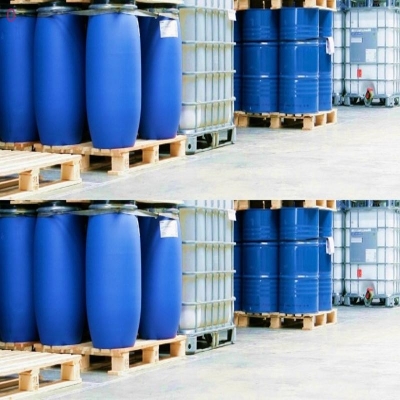-
Categories
-
Pharmaceutical Intermediates
-
Active Pharmaceutical Ingredients
-
Food Additives
- Industrial Coatings
- Agrochemicals
- Dyes and Pigments
- Surfactant
- Flavors and Fragrances
- Chemical Reagents
- Catalyst and Auxiliary
- Natural Products
- Inorganic Chemistry
-
Organic Chemistry
-
Biochemical Engineering
- Analytical Chemistry
- Cosmetic Ingredient
-
Pharmaceutical Intermediates
Promotion
ECHEMI Mall
Wholesale
Weekly Price
Exhibition
News
-
Trade Service
ICIS, a market information service provider for the global energy and chemical industry, recently stated that with increasing regulatory pressure, chemical companies are paying more attention to the carbon footprint of raw materials, not only to reduce their own "scope three" carbon emissions, but also to reduce customers' "scope three" carbon footprint carbon emissions
.
International standard and agreement-setting bodies such as the International Organization for Standardization (ISO), World Resources Institute (WRI) and World Business Council for Sustainable Development (WBCSD) classify greenhouse gas emissions, including carbon emissions, into 3 categories: "Scope "Scope 1" includes all direct emissions; "Scope 2" includes indirect emissions from electricity, heat or steam consumption; and "Scope 3" includes all other indirect emissions
.
Producers can control Scope 1 and Scope 2 emissions because they have to take responsibility for the production process, but there are still plenty of Scope 3 emissions that need to be addressed
.
In the chemical industry chain, usually about 1/3 of the carbon emissions are directly related to the production and operation of chemical companies, that is, the emissions of "Scope 1" and "Scope 2", but still more than 60% of the carbon emissions belong to the "Scope 3" "Emissions
.
This means that there is still huge room for improvement in carbon reduction
.
Regulatory pressure mounts
The European Commission issued a proposal on corporate sustainability reporting in April 2021, intending to adopt the EU sustainability reporting standards
.
This would require all large and public companies to disclose Scope 3 emissions in their projects
.
According to the proposal, the first set of standards will be implemented in October this year
.
In the U.
S.
, the Securities and Exchange Commission proposed a new rule that would require public companies to disclose greenhouse gas emissions, including "Scope 3," as well as climate-related risks and achieving net-zero emissions goals
.
SEC Chairman Gary Gensler said in March, “Investors support climate-related disclosures because they recognize that climate risks can pose significant financial risks to companies and investors need reliable information about climate risks.
, to make informed investment decisions
.
”
Sourcing raw materials with a lower carbon footprint
When it comes to measuring and reducing "Scope 3" emissions from chemical companies, there is a growing focus on upstream, the feedstocks they buy
.
Richard Hardman, chief technology and sustainability officer at Clariant in Switzerland, said: “This is because downstream emissions from chemical use are difficult to measure because they often have many different applications
.
When we set 'scope three' We will focus on the part that is most likely to have an impact, which is upstream
.
” Scope 3 emissions account for more than 60% of Clariant's total greenhouse gas emissions
.
When it comes to sourcing raw materials, Clariant uses the same raw materials, but their sources have a significantly lower carbon footprint
.
If nitric acid is used as a raw material, its production process produces nitrous oxide, a powerful greenhouse gas, which is about 300 times more intense than carbon dioxide in global warming
.
"You can identify which companies have nitrous oxide abatement systems and switch suppliers to buy nitric acid with a much lower carbon footprint," Hardman said
.
Clariant also works with suppliers to calculate the carbon footprint of their purchased feedstocks and consults databases to calculate supplier-specific carbon footprints based on certain process technologies used
.
Clariant is part of the Working Group Together for Sustainability (TfS), a chemicals purchasing organization that has developed a catalog of standards for calculating the carbon footprint of products
.
In terms of reducing "Scope 3" emissions, Trinseo believes that green ammonia can be used as a raw material
.
Traditional ammonia production is carbon-intensive
.
"The most exciting part is sourcing green ammonia and what it means to reduce the carbon footprint of our products, and we see a lot of opportunity," said Trinseo CEO Frank Bozic
.
Trinseo uses ammonia as a feedstock to produce methyl methacrylate (MMA), which is then used to produce polymethyl methacrylate (PMMA)
.
According to the company's annual report to the U.
S.
Securities and Exchange Commission (SEC), it mainly sources acetone and ammonia for MMA production from two Italian suppliers
.
Bozic noted that customers in the automotive and consumer goods sectors are more active in finding sustainable solutions
.
The company aims to reduce Scope 1 and Scope 2 greenhouse gas emissions intensity by 35% by 2035 from 2017 levels, and plans to begin reporting and tracking Scope 3 emissions in 2025
.
In addition, the company has focused its M&A strategy on low-carbon businesses
.
Reduce carbon footprint with recycled materials
What can companies do to reduce the carbon footprint of their products and their overall Scope 3 emissions? One option is to source more recycled raw materials, which typically have a smaller carbon footprint
.
This way, the carbon footprint of making the material in the first place is skipped, Hardman points out
.
Recycling technology company Agilyx is measuring the carbon footprint of recycled plastics as consumers seek ways to reduce Scope 3 emissions
.
According to an analysis published in July 2021, Agilyx produces recycled polystyrene that reduces carbon emissions by 75% compared to virgin polystyrene
.
Tim Steadman, CEO of Agilyx, said, "We are working hard to provide more services, including solutions for how to calculate and reduce overall carbon emissions
.
"
Bio-based raw materials in high demand
Another major means of reducing the carbon footprint of feedstocks is the use of bio-based feedstocks
.
Clariant, for example, is using rice bran wax (a wax produced during the manufacture of rice bran oil) to produce a range of coatings (for cans, fertilizers and paper), replacing petroleum-based wax feedstocks
.
To address Scope 3 emissions, Germany's Covestro plans to increase its purchases of bio-based toluene and benzene feedstocks
.
The company aims to increase production of renewable diphenylmethane diisocyanate (MDI), toluene diisocyanate (TDI) and polycarbonate (PC)
.
Renewable MDI and PC are characterized by climate neutrality, while renewable TDI is characterized by low carbon
.
Covestro has started production of renewable MDI in February, renewable TDI in March, and renewable PC production in December last year
.
Thomas Topfer, CFO of Covestro, said: “The company’s renewable product output is still very low, but thousands of tons have been produced and sold
.
We want to significantly increase renewable product production, so we need more raw materials and Convince more customers to use it
.
Companies are selling renewable MDI, TDI and PC at a considerable premium, proving the value of low and zero carbon products.
”







